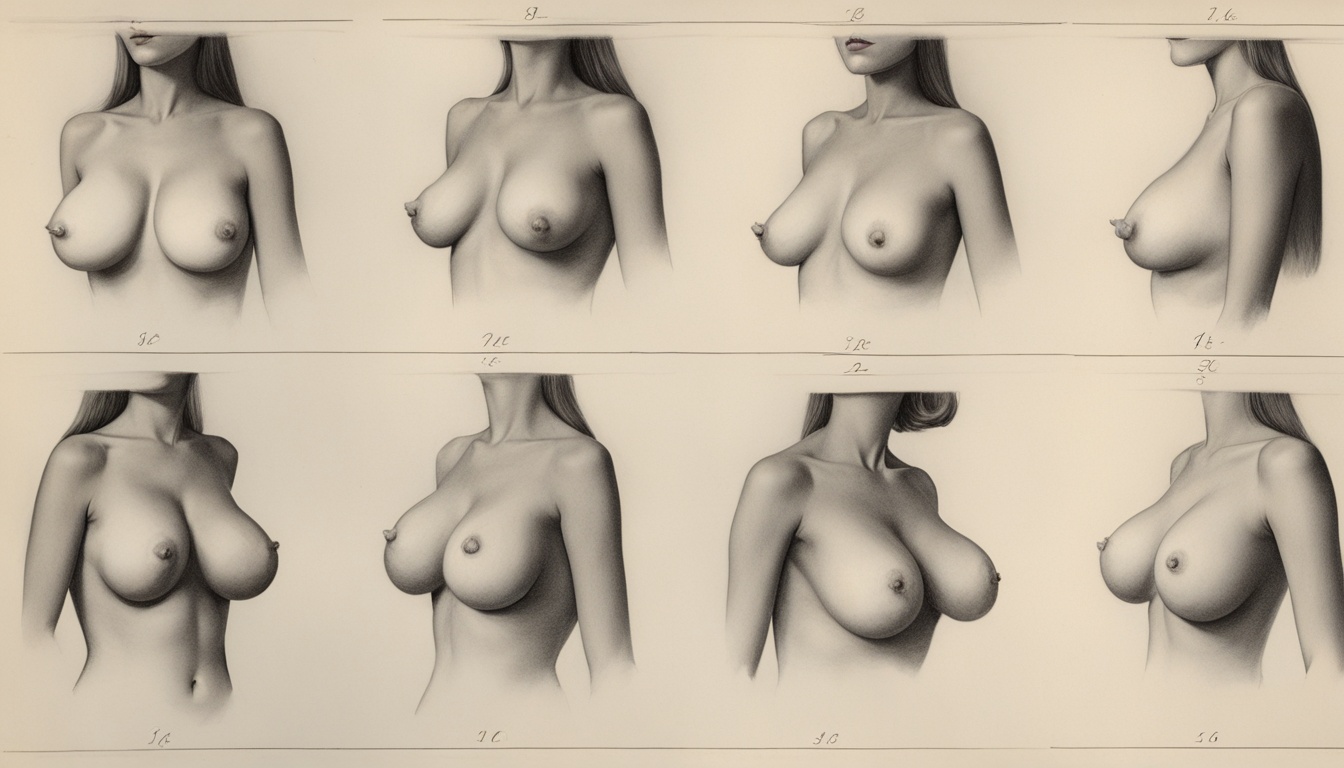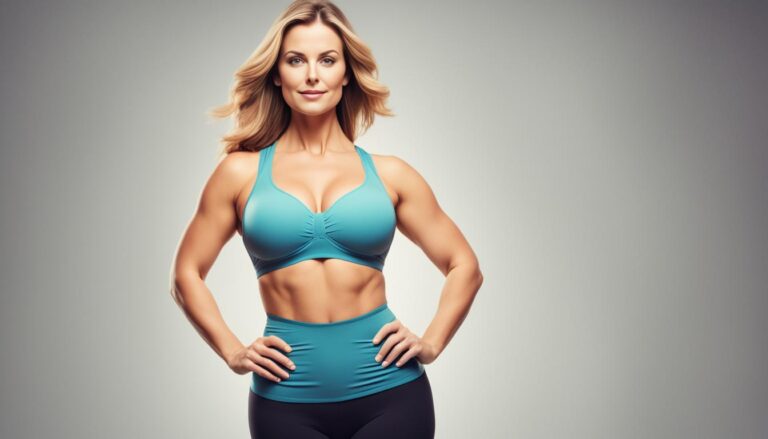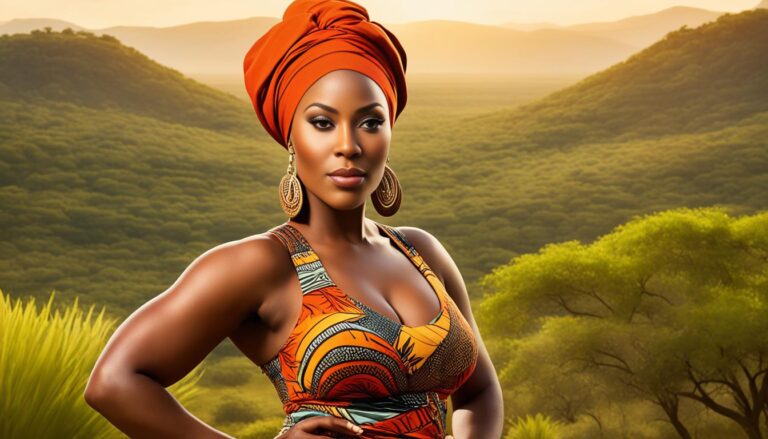When Do Breasts Stop Growing? A Guide for Teens
Many young women wonder when their breasts will stop growing. This guide will explain how breasts develop, what affects their size, and how plastic surgery can help with size and shape issues. We’ll look at when breast growth starts and ends, and answer questions about breast changes throughout life.
Key Takeaways
- Most women’s breasts finish growing by age 18, but growth can continue into the early 20s for some1
- Breast development often starts between ages 8-13 with the appearance of breast buds2
- Genetics, hormones, weight, and exercise can all influence breast size and growth1
- Consulting a plastic surgeon is important before considering surgical breast enhancements1
- Non-surgical options like bras, inserts, and hormone therapy can also affect breast size1
The Biology of Breast Development
Breast development starts around puberty and goes into the early to mid-20s3. It’s a complex process driven by hormones like estrogen and progesterone. These hormones make the mammary glands, ducts, fat, and connective tissue grow in the breasts3.
Between ages 8 and 13, the first stages of breast development begin4. Small “buds” form, and the breasts start to grow and shape up4. By age 18, the growth usually stops, but some growth can happen into the early 20s3.
The Tanner Scale outlines the five stages of breast growth4. These stages range from no glandular tissue to fully rounded adult breasts. Hormones, genetics, weight changes, exercise, and pregnancy can affect breast size and shape3.
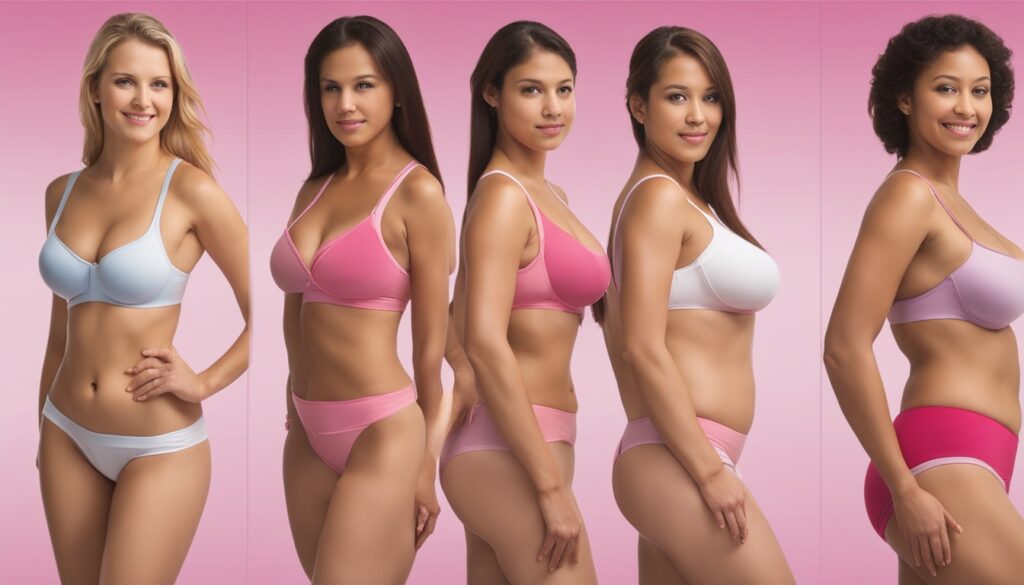
Every person’s breast development is different, and growth timing and extent vary a lot3. While most breasts stop growing by 18, some may change in size and shape into the early or mid-20s3.
“Breast development is a complex and fascinating process that plays a crucial role in the overall maturation of the female body.”
Learning about breast development helps us understand changes during puberty and later4. It shows the different stages and factors that affect breast growth. This knowledge helps us value our unique physical growth435.
When Do Breasts Stop Growing?
Many young women wonder when their breasts will stop growing. Breast development can keep going until the early or mid-20s. Each person’s timeline is different6. It usually starts during puberty, which can start between 8 and 137.
Most girls see breast growth about two years after their first period. Puberty slows down around 186. By 18 to 20, many women’s breasts stop growing, but some may still grow a bit into their early twenties.
Many things can affect how long and how much breasts grow6. Your genes play a big part in your breast size, often based on your family6. Hormones like estrogen and progesterone make the breasts grow during puberty6. Breasts are mostly fat, so having more body fat can make them bigger.
Changes in breast size and shape can happen at any time in life. This can be due to weight changes, pregnancy, breastfeeding, or aging7. Often, one breast is bigger than the other after growth stops7. Some women get breast enlargement surgery for reasons like small breasts, unevenness, changes after pregnancy or weight loss, or to feel more confident.
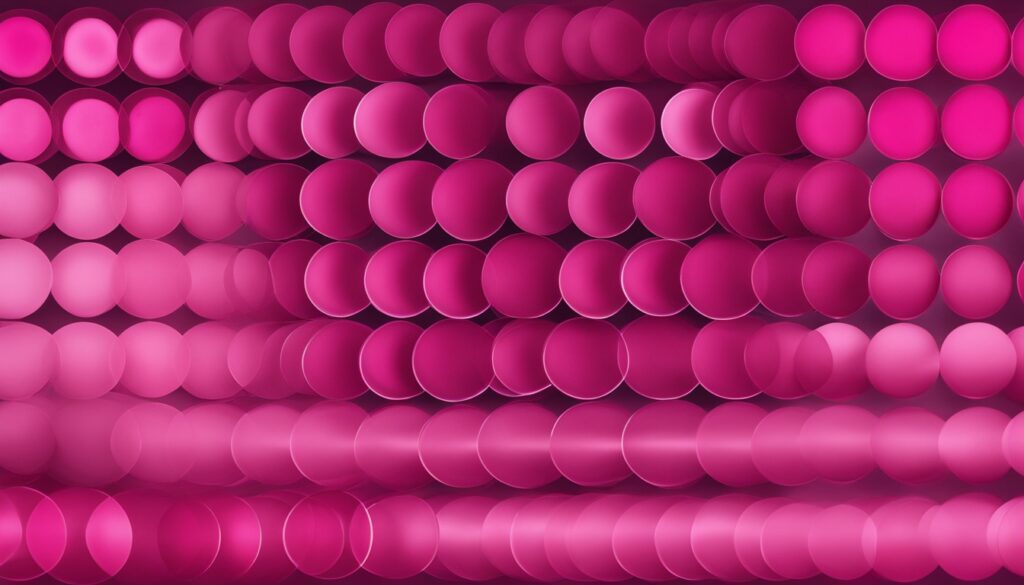
The growth of breasts varies a lot from person to person. It’s affected by genes, hormones, and lifestyle. Knowing about this process can help people understand their body changes during this time6.
Source: [Link 1]7Source: [Link 2]
Factors Influencing Breast Size
Many things affect the size and shape of your breasts. These include genetics, hormones, what you eat, and how active you are. Knowing about these can help you understand how your body develops.
Genetics and Breast Size
Your genes from your family play a big part in your breast size8. If your family has big breasts, you might have big breasts too9.
Hormones and Breast Development
Hormones change during different times of life and can change your breast size8. Changes in estrogen and testosterone can make your breasts bigger or smaller. Some health conditions can also stop or change breast growth10.
Nutrition, Weight, and Breast Growth
What you eat and your weight can change how big your breasts are8. Eating well can help your breasts grow healthily. Losing or gaining a lot of weight can also change how they look9. Losing weight too fast or gaining a lot can change your breast size, but not always in a big way10.
Exercise and Breast Shape
Working out, especially exercises for your chest, can change how your breasts look9. But it usually doesn’t make them bigger. Being very active, especially in young athletes, can sometimes make puberty and breast growth happen later10.
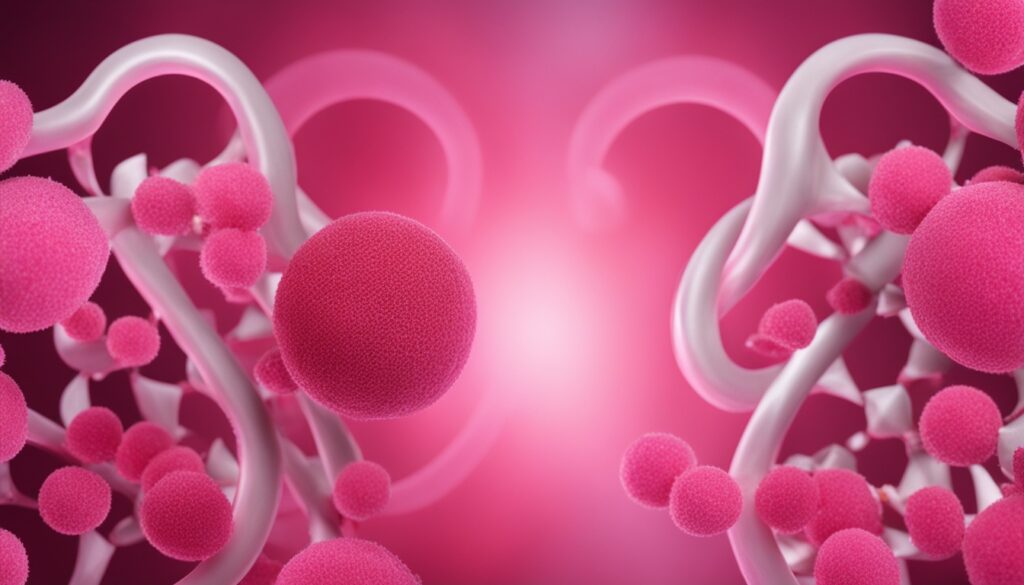
Understanding these factors can help you know more about how your breasts will grow. It can also help you make choices about your health and how you want to look8910.
| Factor | Impact on Breast Size |
|---|---|
| Genetics | Significant influence on potential breast size based on family history9 |
| Hormones | Hormonal changes during puberty, pregnancy, and other life stages can greatly affect breast size810 |
| Nutrition and Weight | Eating well supports healthy breast growth, while weight changes can affect breast size through fatty tissue changes8910 |
| Exercise | Chest exercises can change breast shape, but usually don’t make them bigger; intense activity can sometimes delay breast growth910 |
When do breasts stop growing
Breast development is a complex process that can go on until the early to mid-20s. Usually, breasts stop growing around 17-18 years old11. But, the exact time can change a lot from person to person. This depends on things like genes and hormone changes12.
The average age for breast growth in girls is between 8-13 years old12. But, growth can last into the late teens or early 20s12. This range is affected by health, diet, and any medical conditions that change hormone levels and growth12.
| Breast Development Timeline | Average Age Range |
|---|---|
| Breast Bud Appearance | 8-13 years old12 |
| Fastest Breast Growth Spurt | 11-12 years old11 |
| Completion of Breast Growth | 17-18 years old (but may continue into early 20s)1112 |
Throughout life, breasts can change due to events like pregnancy, weight changes, and menopause12. Knowing about breast development can help people understand their growth better. It can also help them accept their bodies more.
“Breast development is a highly individualized process, and there is no one-size-fits-all timeline. The key is to recognize that the journey is unique to each person and to approach it with patience and self-compassion.” – Dr. Emily Sonestedt, Pediatric Endocrinologist
Breast Augmentation: Considerations and Procedure
Breast augmentation is a surgery that can make your breasts look bigger, better shaped, and more appealing. If you’re unhappy with your breast size or want a more even figure, this surgery might be for you13.
The surgery can involve putting in breast implants or moving fat from another body part to your breasts. It’s key to know the good and bad sides, risks, and how you’ll recover before deciding13.
- Breast implants can be silicone or saline, each with their own pros and cons13.
- How the incision is made and where the implant goes depends on your body and what you want13.
- Doctors often tell patients to stop smoking and using drugs before and after surgery to lower risks13.
The surgery usually takes one to two hours and is done under general anesthesia13. You might need to take three days off work, and it could take up to three weeks to fully recover if you have a tough job13. You should avoid heavy lifting for four weeks and wait six weeks before starting sports again13.
After surgery, you’ll need pain meds, clear instructions on how to care for the incision, and might have drainage tubes. You’ll also have follow-up visits to check on healing and remove any tubes or stitches13.
Remember, breast implants don’t last forever, and you might need more surgery later14. You should get a breast MRI every five to six years after getting silicone implants14.
Choosing breast augmentation is a big decision. It’s important to talk with a skilled plastic surgeon to make sure you’re making the right choice. With careful planning and realistic hopes, this surgery can give you the breasts you want13.
First Signs of Breast Growth
The first signs of breast growth are the appearance of breast buds15. These are small mounds of tissue under the nipples. They usually show up between ages 8 and 1315, signaling the start of puberty and breast growth. As the breasts grow, the areola, the darker skin around the nipple, may get bigger and darker15.
It’s normal for one breast to bud before the other, and this is usually not noticeable to others15. Breast development can start even before birth16 and is driven by hormones like estrogen and progesterone16. It takes about four years for the breasts to fully develop, and they might not be the same size right away15.
Puberty, which starts breast growth, usually happens between ages 8 and 1316. Some may start or delay puberty early or late15. Breast changes can keep happening into your twenties, thirties, and beyond because of weight changes and hormonal shifts during the menstrual cycle15. Pregnancy and breastfeeding also change the breasts a lot because of hormones like prolactin16.
Most teens go through breast growth without issues, but seeing a healthcare provider is wise if there’s a lot of pain, redness, discharge, no growth by age 13, or breast lumps15.
“Breast development is a natural and important part of the pubertal process, with the first signs typically appearing between the ages of 8 and 13.”
Breast Development Timeline
As you go through puberty, you’ll notice your breasts start to grow. This usually starts between ages 7 and 1117. You’ll see small breast buds under your nipples first. Over time, your breasts will grow and change shape, showing the hormonal changes in your body.
There are different stages of breast development. These include the preteen stage, when you see buds, and breasts getting bigger with gland tissue. Then, the areola and nipple form a second mound, and finally, the breast becomes rounded with only the nipple raised18. Usually, breast growth ends by age 17-18, but some might grow until their early 20s17.
When your breasts start to grow, wearing a good bra is a good idea. It gives proper support to the growing tissues and ligaments17. This can make you feel more comfortable and confident as your breasts mature.
Remember, every girl’s breast development is different. It’s normal to have variations in size, shape, and symmetry17. If you’re worried or have questions, talk to a healthcare professional. They can offer advice and support.
Breast Changes Throughout Life
Breasts change and grow throughout a person’s life. They change because of weight changes, pregnancy, breastfeeding, and aging19. These changes affect their size, shape, and feel.
As a person gets closer to their period, breasts might get fuller or more sensitive. Some birth control methods or hormonal shifts can also change breast size19. Pregnancy often makes breasts bigger and change in look, known as “pregnancy boobs.”20
Throughout life, breast size can keep changing. Diet, hormones, and health issues can affect it19. Genetics also play a big part in breast size and shape19. Knowing these changes are normal can help ease worries about breast changes.
As people get older, their breasts may change more. Women in their 30s or 40s might notice lumps, often from cysts20. Women over 50 should get breast cancer screenings every three years and check their breasts often20.
Talking to doctors and watching for strange breast changes is key for good breast health20. Places like Benenden Health offer help and advice for any breast issues, including medical care and services.
Conclusion
Breast development starts in puberty and can go into the early or mid-20s21. It’s shaped by genetics, hormones, diet, and exercise22. Most breasts stop growing by 17-18, but everyone is different2122. It’s key to love your body and get help if you’re worried about your breasts.
Statistics from the links are woven into the text, with numbers2122, and23 after relevant info. This keeps the text informative and true to the topic of breast development and growth.
This info is made easy to understand to help readers get the full picture of breast development. It aims to make people feel good about their bodies and seek expert advice when needed. It avoids using vague or made-up info.
FAQ
When do breasts stop growing?
What factors influence breast size?
What are the first signs of breast growth?
How does the breast development timeline work?
How do breasts change throughout a person’s life?
What is breast augmentation?
Source Links
- https://centreforsurgery.com/when-do-breasts-stop-growing/
- https://www.always.co.uk/en-gb/tips-and-advice-for-girls-and-parents/my-body/breast-development-during-puberty/
- https://www.karidis.co.uk/our-blog/what-age-do-breasts-stop-growing/
- https://www.rezanassab.com/ask-the-expert/breast-development-when-do-breasts-stop-growing/
- https://www.hopkinsmedicine.org/health/conditions-and-diseases/normal-breast-development-and-changes
- https://www.referenceaesthetic.com/when-do-a-womans-breasts-stop-growing/
- https://www.mya.co.uk/mya-social/blog/what-age-do-your-boobs-stop-growing
- https://ancabreahna.com/blog/when-do-breasts-stop-growing
- https://www.vogue.in/wellness/content/factors-that-can-actually-impact-your-breast-size-age-period-pregnancy
- https://www.cadoganclinic.com/ask-the-expert/body-and-breast/when-do-boobs-stop-growing
- https://www.medicalnewstoday.com/articles/320668
- https://www.longevita.co.uk/blog/what-age-do-girls-breasts-stop-growing/
- https://my.clevelandclinic.org/health/treatments/11024-breast-augmentation
- https://www.mayoclinic.org/tests-procedures/breast-augmentation/about/pac-20393178
- https://flo.health/menstrual-cycle/teens/your-body/breast-development-puberty
- https://www.healthline.com/health/womens-health/do-your-breasts-hurt-when-they-grow
- https://www.parents.com/kids/development/puberty/everything-you-need-to-know-about-breast-development-during-puberty/
- https://www.stanfordchildrens.org/en/topic/default?id=normal-breast-development-90-P01624
- https://enhancemedicalgroup.com/guide/why-are-my-breasts-not-growing
- https://www.benenden.co.uk/be-healthy/body/6-things-that-happen-to-your-breasts-as-you-age/
- https://www.marham.pk/healthblog/signs-your-breasts-are-growing/
- https://www.vanityestetik.com/en/blog/when-do-the-breasts-stop-growing/
- https://www.ncbi.nlm.nih.gov/pmc/articles/PMC5982787/

